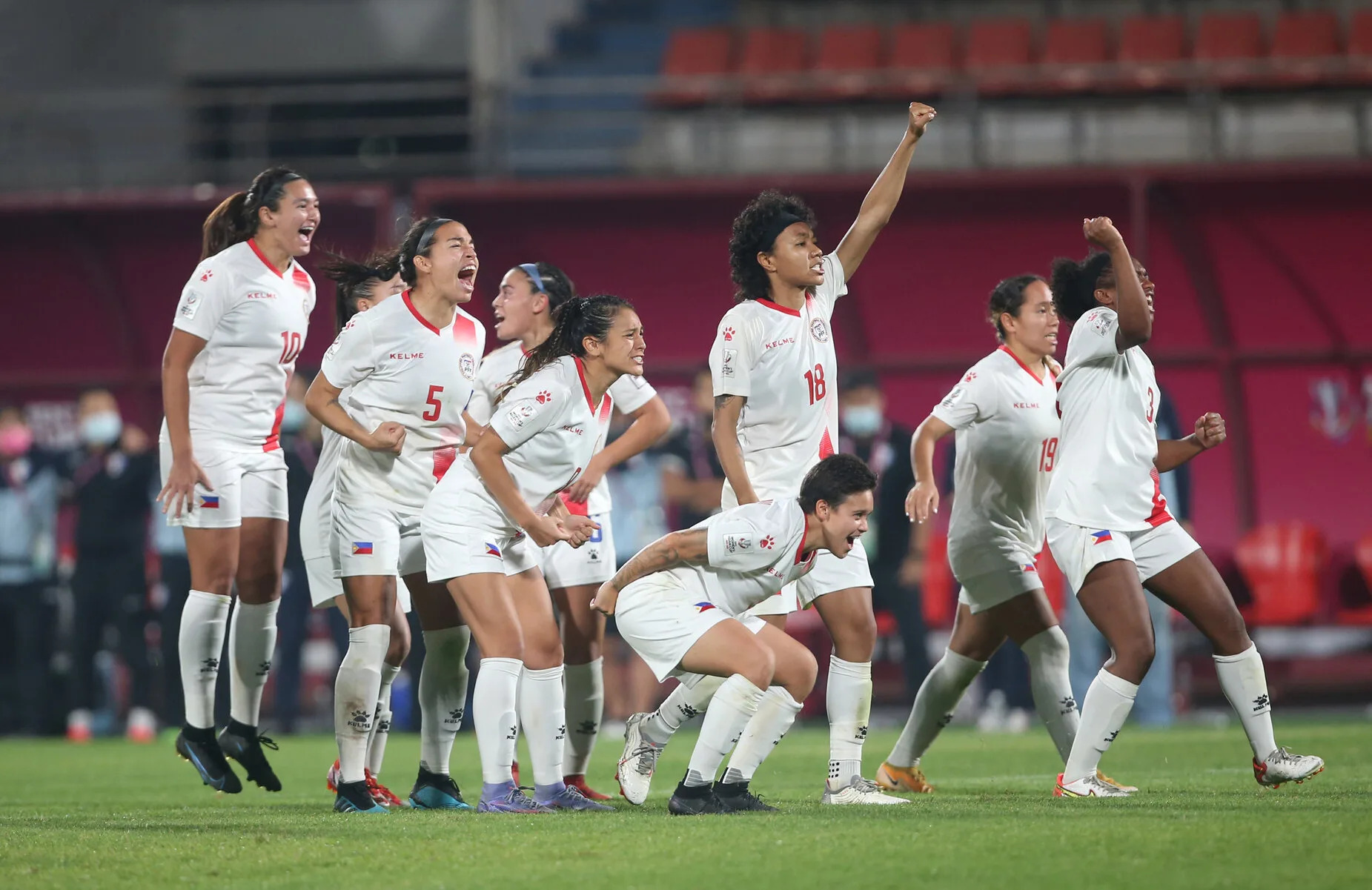Here’s What You Might Have Missed From The Women’s World Cup
female athletes FIFA World Cup football Women's Sports
Rawya Lamei
Image via Olympics
With the FIFA Women’s World Cup behind us, we can officially say that it was a success. Considering how much people have spoken about it, how viral some moments have gone, and the fact that people have continued talking about it for a while after its conclusion, it feels safe to say that it was an eventful tournament when you factor in the limited amount of attention that women’s sports tend to amass. But for those who didn’t get a chance to follow the tournament, we’ve got you covered with some of the big moments you may have missed.
More Teams on the Field!

Image via Rappler
This year’s cup was made extra special with the format’s expansion from 24 participating countries to 32 following the success of the last edition in 2019. This growth could only mean two things: that women’s football is getting better and that more people are talking about it. This year, we saw several women’s teams make their World Cup debut, including the Philippines, the Republic of Ireland, Portugal, and Morocco.
As the Women’s World Cup has only been played since 1991, this year marks its ninth edition, with Spain crowned champions this time around. This edition marks Spain and England’s first time qualifying for the final, an even more remarkable achievement when you consider the fact that there have only been four winners in the Women’s World Cup’s history – the United States with an incredible four wins, Germany with two, as well as Japan and Norway.
Record-High Viewership

Image via Bloomberg
Nearly two million tickets were sold this year, with an average of over 25 thousand fans attending the first-round marches, which was a 29 per cent increase in attendance since 2019’s edition. Over here in the region, however, beIN SPORTS recorded record-breaking cumulative viewership rates of 93.5 million across the Middle East and North Africa.
Morocco Made Everyone Proud

Image via Reuters
Morocco’s national women’s football team have officially made history. After the men’s team became the first Arab and African team to qualify for the quarter-final of the World Cup, then qualifying for the semi-final, all of our hearts beat for Morocco for this outstanding feat. The men’s success was followed by the women becoming the first Arab team to qualify for the Women’s World Cup. They were also the third African team to make it to the round of 16 alongside Nigeria and South Africa – the first time we’ve seen so many teams from the continent on the pitch. More impressively, they made it through the qualifying rounds after beating two-time champions Germany, who were eliminated from the tournament following Morocco’s win.
Another reason Morocco made headlines this year was thanks to Nouhaila Benzina, who became the first hijabi player in World Cup history after a ban on wearing the hijab on the field was lifted in 2014. The headscarf was cause for debate for years, especially during the 2007 Women’s World Cup round in Canada when it was still prohibited. But Benzina has officially become an icon and an inspiration for Muslim women, particularly those who wear the scarf.
Spain’s Win Came With Its Hurdles

Image via Sky News
After Spain’s victory over England for the cup, the Spanish were over the moon for a while. Alas, it was too good to be true. As Las Rojas celebrated their historic win, Luis Rubiales, president of the RFEF (Royal Spanish Football Federation), grabbed the team captain, Jenni Hermoso, by the head and kissed her against her will for the whole world to see. As a result of this stunt, FIFA has suspended him from all football-related activities for three months while its disciplinary committee investigates his conduct at the Women’s World Cup final. Many players in the team have even refused to play until he is officially removed from the federation. However, this is not the first time Rubiales has faced controversy, and you can find out more about previous allegations here.
recommended
 Cafés
Cafés
Bite Into the Croffle Craze: The Best 5 Spots to Try Croffles in Cairo
cafes cairo +2 City Life
City Life



